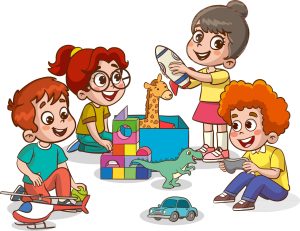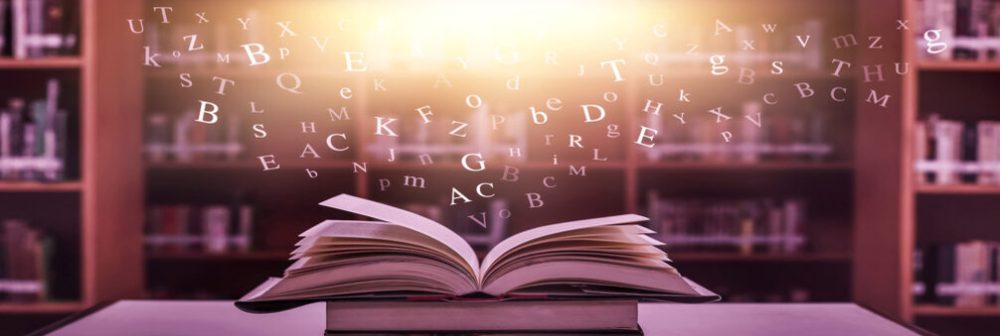
In Module 4, we talked a lot about participatory service when it comes to the library and what libraries can do for their community and the enrichment of people’s lives. Upon going through the materials for this module, I stumbled across the article from the Washington Post about Toy Libraries. As someone with an interest in Children’s Library, this concept was fascinating to me, and I decided to dive a little bit deeper into the history and modern function of Toy Libraries. Although I do not have any children myself, I do understand that finding quality and enriching toys that help your child grow and learn can be quite expensive. Especially since children can lose interest in a toy rather quickly. Having the ability to go to the library or a specific toy library and swap out toys your child grew tired of for new ones seems like a great way to keep children playing. Additionally, this is a great way to encourage families to play together.
What is a Toy Library:
Toy Libraries are places where families can go and check out toys, games, puzzles, dolls, etc. The concept is very similar to checking out books. The family sorts through the materials to decide what is right for their family, and then they check out the item. In a few weeks they bring the item(s) back and can check out something new. Toy Libraries carry educational toys and learning materials and are usually geared towards early childhood development. So, children aged 0 – 9. In addition to providing learning toys and learning materials, Toy Libraries also carry inclusive toys for those with disabilities to enjoy (Life’s Little Treasures Foundation, n.d.). There are many reasons why the use of a Toy Library is beneficial. Toy Libraries reduce household waste by ensuring getting rid of the need for toy packaging, plastic, single-use toys, etc. (WasteSorted, 2020). As mentioned before, children often tire of toys and lose interest after only a few play sessions. Utilizing a toy library will ensure the toy is always new and enriching while also saving families tons of money. On average, families spend approximately $500 per year on toys alone (Dumas, 2020).
Is It Safe?
Parents may worry about spreading germs through trading and renting toys. They may wonder how passing toys from one family to the next will keep their child safe and healthy. However, there are many safeguards in place and policies on cleaning the toys. The USA Toy Library Association has a cleaning policy located on their website that all USA Toy Libraries must follow. They take direction from the CDC on toy cleaning protocol (USATLA, n.d.).
- Toys are washed with soap and water.
- Toys must be sprayed with disinfectant, and then wiped off.
- Toys should then be cleaned with fresh water to clean off the disinfectant residue.
Where can you find a Toy Library?
Toy Libraries can be found all throughout the United States as well as globally. Within the United States, Toy Libraries are primarily housed at Libraries, Childcare Centers, Youth Centers, Churches, or Non-Profit Organizations. It is important to note that the private toy centers/Toy Libraries often have a membership fee associated with the program and are not free. They often operate either a monthly or annual fee in order to participate. This fee goes towards the upkeep and procurement of new toys, the software associated, and staff. Toy Libraries housed within the public library are free to use.
History of Toy Libraries:
The first Toy Library within the United States was thought up and created during the Great Depression. In an era when many had nothing, children would often steal toys in order to have something to play with. After a group of children were caught stealing the toys, their school decided that children needed to have access to toys in order to further their growth and development and to provide enrichment to their everyday lives. Even back then, educators and communities understood the importance of play in children’s lives and that all children should have access to toys. The community came together and started the first ever “Toy Loan”. The toy Loan encouraged children to rent toys, while also teaching them responsibility and care of property by keeping the toys nice and making sure to bring them back. This was in the Los Angeles Area. Today, there are over 50 Toy Loan locations throughout the City of Los Angeles (Cape Cod Toy Library, n.d.).
References:
Cape Cod Toy Library. (n.d.). WHAT IS A TOY LIBRARY? https://www.capecodtoylibrary.org/toy-libraries
Dumas, B. (2020). Growing trend at libraries allows kids to test drive toys. Kiro 7. https://www.kiro7.com/news/trending/growing-trend-libraries-allows-kids-test-drive-toys/MHXWNSG7LVGE7PD3FVVIHJXIOA/
Free, C. (2020). This Growing Trend Lets Kids Check Dolls and Games from a Toy Library. The Washington Post. https://www.washingtonpost.com/lifestyle/2020/01/22/this-growing-trend-lets-kids-check-out-games-dolls-toy-library/
Life’s Little Treasures. (n.d.). WHAT IS A TOY LIBRARY? https://lifeslittletreasures.org.au/what-is-a-toy-library/#:~:text=Toy%20libraries%20aim%20to%20support,play%20value%20has%20been%20exhausted.
USA Toy Library Association. (n.d.). Welcome to the USA Toy Library Association. https://www.usatla.org/
Waste Sorted. (2020). What are toy libraries? (and why they make sense!). https://www.wastesorted.wa.gov.au/blog/toy-libraries
